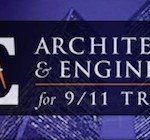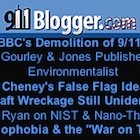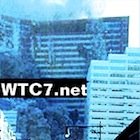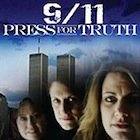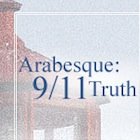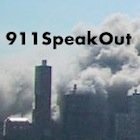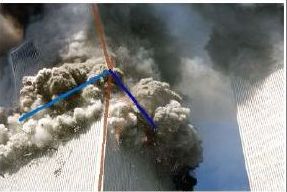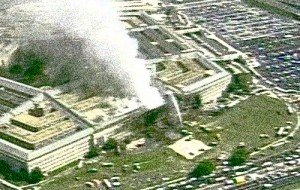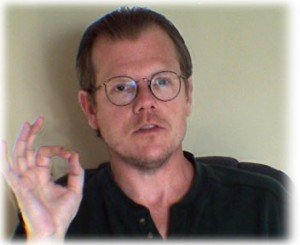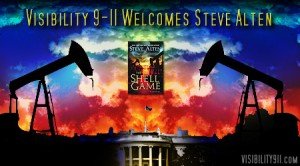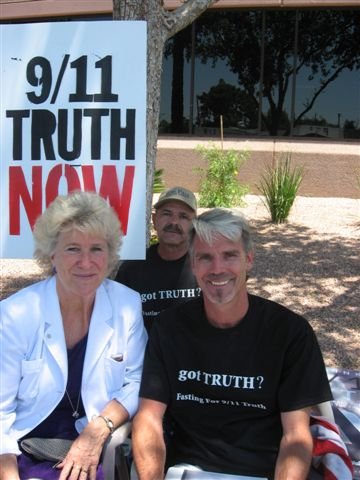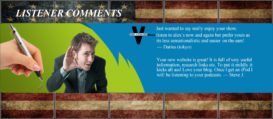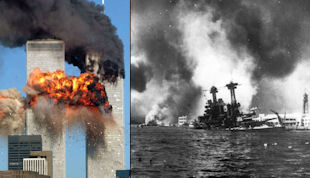 A number of senior officials in the United States government and military gave warnings in the week before September 11, 2001, or early on the morning of September 11, that seem to have predicted the 9/11 attacks with chilling accuracy.
A number of senior officials in the United States government and military gave warnings in the week before September 11, 2001, or early on the morning of September 11, that seem to have predicted the 9/11 attacks with chilling accuracy.
These men–as is described below–voiced concerns that Osama bin Laden would carry out an attack in the U.S. in the near future; warned that an al-Qaeda attack that resulted in the deaths of hundreds of Americans could happen “at any time”; expressed concern that terrorists would attack the World Trade Center; warned about a “seminal event” occurring in the U.S. in which “hundreds, if not thousands” of Americans would be killed; said that “someone [is] going to attack us in a fashion we did not anticipate”; warned that “something big” was about to happen; and suggested the possibility of an attack taking place that would be equivalent to the Japanese attack on Pearl Harbor in 1941, in which over 2,400 Americans died.
The six officials who issued these warnings were Charles Nemfakos, deputy under secretary of the Navy; Tommy Franks, head of the U.S. Central Command; John O’Neill, head of security at the World Trade Center who had previously been a senior FBI agent; Richard Clarke, the White House counterterrorism chief; Kirk Lippold, commander of the USS Cole when it was attacked by terrorists in October 2000; and Donald Rumsfeld, the secretary of defense.
The accuracy of these men’s warnings and the fact that the warnings were given so soon before 9/11 certainly appears suspicious. We need to consider, therefore, if the content and timing of the warnings, in relation to the 9/11 attacks, was just a coincidence or the result of something more sinister. Were the men who gave the warnings perhaps just very perceptive? Or did at least some of them know that a major attack was about to take place?
If any of these officials knew in advance that a terrorist attack was going to take place in the U.S. on September 11, the imminent catastrophe would surely have been on their minds in the days leading up to it. They may therefore have been inclined to–perhaps inadvertently–make indirect references to what they knew was about to happen and this could be why they gave warnings that appear to have been prescient of the 9/11 attacks.
NAVY OFFICIAL TALKED ABOUT THE NEED FOR ‘AN EVENT EQUIVALENT TO PEARL HARBOR’
The day before 9/11, Charles Nemfakos, deputy under secretary of the Navy, said that before it addressed the weaknesses in its defense policy, the United States would need to suffer an attack equivalent to the Japanese attack on Pearl Harbor, Hawaii, in 1941 that led America to enter World War II.
On September 10, 2001, Nemfakos–the “number three official in the Navy,” according to Defense Week magazine–gave a briefing to a group of civilian employees of the Naval Surface Warfare Center (NSWC) in Crane, Indiana. The NSWC employees had come to Washington, DC, to interact with some of the Navy’s top officials and complete a program for a certificate in public management.
During the briefing, one of the NSWC employees has recalled, someone asked Nemfakos “what it would take for America’s defense policy to be clear and concise in the 21st century.” In response, Nemfakos said that “he felt an event equivalent to Pearl Harbor, either terrorist or military, would be the only event that would awaken the United States from the complacency and security they have had since the end of the Vietnam [War] era.” [1]
The fact that Nemfakos made this comment on September 10 is quite chilling, since the attack on the U.S. the following day was immediately likened to the attack on Pearl Harbor. The attacks on the World Trade Center and the Pentagon were, for example, described as “another Pearl Harbor,” “the second Pearl Harbor,” “the Pearl Harbor of American terrorism,” and an event that “rivals if not exceeds the attack on Pearl Harbor.” [2] An Internet search by the San Francisco Chronicle two days after 9/11 found “747 stories in newspapers and other publications mentioning both the World Trade Center and Pearl Harbor.” [3] Among the similarities between the two events, the death tolls were relatively close. In the attack on Pearl Harbor, 2,403 Americans and 64 Japanese died. [4] In the 9/11 attacks, 2,996 people died. [5]
NAVY OFFICIAL ATTENDED WAR GAMES AT THE WORLD TRADE CENTER
Nemfakos was a powerful man. He “exerted more day-to-day influence than anyone else in the Navy during the latter half of the 1990s,” Defense Week reported. Betty Welch, then-deputy assistant secretary of the Navy for civilian personnel and equal employment opportunity, said in 2000, “It’s Charlie Nemfakos who controls the Navy probably more than anybody else.” [6]
Interestingly, in the 12 months before September 11, Nemfakos attended some “high-powered war games” that took place at the World Trade Center and seem to have helped prepare the American financial and national security communities for the aftermath of the 9/11 attacks. The war games were part of an initiative called the “New Rule Sets Project.”
The New Rule Sets Project was a research partnership between Wall Street bond firm Cantor Fitzgerald and the Naval War College in Newport, Rhode Island. [7] It brought together “divergent groups of experts” in order to “assess global issues that will affect U.S. national security in coming decades,” Defense News reported. [8] Thomas Barnett, the project’s director, said it “explored the future of globalization and what could threaten globalization, and what would be new definitions of international instability and crisis.”
The project involved the running of a number of sophisticated war game workshops. Three of these were held at Windows on the World, the restaurant on the 107th floor of the North Tower of the World Trade Center. [9] Each workshop was attended by about 30 participants, including “Wall Street CEOs, subject matter experts from academia and think tanks, and national security heavyweights from the White House and from the Pentagon,” according to Barnett. Nemfakos was listed as a participant at the second and third of the workshops at Windows on the World, held in October 2000 and June 2001 respectively. [10]
The New Rule Sets Project apparently served as good preparation for the challenges of the post-9/11 world. Barnett has commented that the shock of the 9/11 attacks effectively told the U.S. political system and national security community, “Hey, here’s a new way of thinking about crisis and instability and threats in the world, and we have got to have new rules for dealing with this.” [11] He said that after 9/11, his research with the New Rule Sets Project “immediately shifted from grand theory to grand strategy.” [12]
ARMY GENERAL TALKED ABOUT HIS FEAR OF TERRORISTS ATTACKING THE WORLD TRADE CENTER
Three days before Charles Nemfakos talked about the need for “an event equivalent to Pearl Harbor,” Army General Tommy Franks, commander in chief of the U.S. Central Command (CENTCOM), made equally prophetic remarks. Specifically, he said his biggest fear was that there would be a terrorist attack against the World Trade Center.
On September 7, 2001, Franks talked to his intelligence staff at CENTCOM headquarters in Tampa, Florida, about what he considered to be the major threats facing America throughout the Middle East and Central Asia. After he finished his presentation, a young sergeant asked him, “General, what keeps you up at night?”
Franks replied, “The thought of one tower of the World Trade Center collapsing into the other tower, killing thousands of people,” according to Computerworld magazine. In his memoir, Franks described giving a slightly different answer. He wrote that he replied, “A terrorist attack against the World Trade Center in New York.” [13] As Canada’s Globe and Mail noted, “Four days later, that’s exactly what happened.” [14]
What is more, Franks had made other remarks that were apparently prescient of 9/11 a few months earlier. In a speech to the Operations Security Professionals Society in late June 2001, he warned, “The asymmetric threat is serious, and deserves our focused thought and preparation.” (“Asymmetric warfare threats,” according to the Washington Times, “include efforts by weaker powers to defeat stronger ones using attacks that can include weapons of mass destruction, the use of computer-based information warfare, and terrorism.”) Franks continued, “The point is to avoid another Pearl Harbor-like event by recognizing the threat and preparing to meet this growing challenge.” [15]
Less than three months after Franks made these comments, the U.S. suffered an attack that, according to the official account, was an example of “asymmetric warfare” and was immediately compared to the attack on Pearl Harbor. On the evening of September 11, according to his own recollections, Franks actually thought to himself, “Today is like Pearl Harbor.” [16]
After 9/11, Franks became “one of three men running the Bush administration’s military campaign against Osama bin Laden and his al-Qaeda organization,” ABC News reported. [17] He led the invasion of Afghanistan in October 2001 and the invasion of Iraq in March 2003. [18]
FORMER SENIOR FBI AGENT WARNED THAT BIN LADEN WOULD ATTACK THE WORLD TRADE CENTER
One man, John O’Neill, gave two separate warnings on the day before 9/11 that were chillingly prophetic of what happened on September 11.
O’Neill had, since August 23, 2001, been director of security at the World Trade Center. Prior to that, he spent 25 years as an FBI agent and, from January 1997, had been special agent in charge of the national security division of the FBI’s New York office. While at the FBI, according to the New Yorker, he “became the bureau’s most committed tracker of Osama bin Laden and his al-Qaeda network of terrorists.” He was at the World Trade Center on September 11 and, unfortunately, was killed when the Twin Towers collapsed. [19]
On the morning of September 10, 2001, O’Neill met Raymond Powers, the director of security at the Rockefeller Center, to discuss various security issues. The two men’s conversation eventually turned to the subject of Osama bin Laden. According to journalist and author Murray Weiss, O’Neill told Powers that “he was sure bin Laden would attack on American soil and expected him to target the Twin Towers again.” “It’s going to happen,” he said. “And it looks like something big is brewing.” [20]
O’Neill again expressed his fear of an imminent al-Qaeda attack that evening, when he went out with a couple of his friends: Robert Tucker, a security company executive, and Jerome Hauer, the former director of New York’s Office of Emergency Management.
At one point in the evening, the three men talked about bin Laden. According to Hauer, O’Neill said: “We’re due. And we’re due for something big.” He added: “Some things have happened in Afghanistan. I don’t like the way things are lining up in Afghanistan.” He then said, “I sense a shift and I think things are going to happen.” Asked when they would happen, he replied, “I don’t know, but soon.” [21]
O’Neill had made similar predictions on earlier occasions. In October 2000, for example, while he was in Yemen, he talked several times with FBI agent Pat Patterson about what bin Laden’s next target might be. He said he believed the World Trade Center–which was bombed by terrorists in 1993–would be attacked again. “John was convinced of it,” Patterson has recalled. He’d said, “They definitely want to bring that building down.” [22]
O’Neill voiced his concerns again around August 2001, when he talked with his friend Chris Isham. When O’Neill said he had just got the job as head of security at the World Trade Center, Isham joked: “That will be an easy job. They’re not going to bomb that place again.” But O’Neill retorted: “Actually, they’ve always wanted to finish that job. I think they’re going to try again.” [23]
FBI AGENT DISMISSED CONCERNS ABOUT THREATS TO AVIATION
Strangely, despite his apparent concern about al-Qaeda carrying out an attack in the United States, O’Neill told Congressional staffers there was no threat to aviation. Cathal Flynn recalled that at some unstated time between 1993 and 2000, when he was head of security for the Federal Aviation Administration (FAA), the Senate Intelligence Committee asked the FAA, the FBI, and the director of central intelligence about threats to civil aviation. O’Neill went to the Hart Senate Office Building in Washington, DC, to respond on behalf of the FBI. But when Senate Intelligence Committee staffers asked, “What are the threats to aviation?” according to Flynn, “John O’Neill said there are none.”
Flynn was surprised at O’Neill’s answer, because there had been a “few indications the FBI had received,” such as information about a suspicious individual who had tried to get “a job with airport access” at Los Angeles International Airport. Flynn wrote O’Neill a note asking about this incident. But, Flynn recalled, O’Neill “looked at the note” and “still didn’t say anything, didn’t change what he had said.” As the two men left the meeting, Flynn again asked O’Neill about the incident and O’Neill told him there was “nothing to it.” [24]
Bruce Butterworth, the FAA’s director of civil aviation security operations from 1995 to 2000, has described the same event. He said he remembered O’Neill’s “testimony to the Senate Intelligence Committee wherein he was unwilling to corroborate FAA claims about credible threats to civil aviation.” [25]
COUNTERTERRORISM CHIEF WARNED OF AN AL-QAEDA ATTACK THAT WOULD CAUSE THE DEATHS OF ‘HUNDREDS OF AMERICANS’
Richard Clarke, the White House counterterrorism chief, warned that a major terrorist attack could take place in the United States in a memo he sent to National Security Adviser Condoleezza Rice a week before 9/11.
On September 4, 2001, the National Security Council’s principals committee–a group of senior officials who advise the president on issues of national security policy–met to discuss al-Qaeda. That day, before the meeting took place, Clarke sent Rice a memo in which he expressed his frustrations with U.S. counterterrorism efforts.
The “real question” the principals committee needed to address, Clarke wrote in the memo, was, “[A]re we serious about dealing with the al-Qaeda threat?” He suggested, “Decision makers should imagine themselves on a future day when the [White House Counterterrorism Security Group] has not succeeded in stopping al-Qaeda attacks and hundreds of Americans lay dead in several countries, including the U.S.” “That future day could happen at any time,” he added. Clarke warned that without more funding for dealing with al-Qaeda, “You are left waiting for the big attack, with lots of casualties, after which some major U.S. retaliation will be in order.” [26]
A week after Clarke’s memo was sent, a “big attack, with lots of casualties,” did indeed occur and this was followed by “major U.S. retaliation,” in the form of the invasion of Afghanistan in October 2001.
Clarke had issued warnings on previous occasions, which, like the warning he gave in his memo to Rice on September 4, seem to have been prescient of the 9/11 attacks. He gave one such warning on July 5, 2001, during a meeting at the White House. At the meeting, which was attended by officials from a dozen government agencies, including the FAA, the FBI, and the Secret Service, a senior CIA counterterrorism expert said the CIA believed that al-Qaeda was planning “something spectacular,” which would probably take place in Israel or Saudi Arabia.
Clarke, according to his own recollections, then told the meeting’s participants he agreed that al-Qaeda was planning a major attack. But, he said: “Maybe [the attack] will be here [in the U.S.]. Just because there is no evidence that says that it will be here, does not mean it will be overseas.” He added that al-Qaeda “may try to hit us at home. You have to assume that is what they are going to try to do.” He said, “Something really spectacular is going to happen here and it’s going to happen soon,” according to two officials who attended the meeting. [27]
A number of steps that agencies should take to address the threat posed by al-Qaeda were agreed upon at the meeting. An e-mail Clarke sent to Rice the day after the meeting stated that several agencies, including the FBI, the CIA, and the Department of Defense, had been directed to develop “detailed response plans in the event of three to five simultaneous attacks.” [28] This was presumably quite fortuitous, since, just over two months later–on September 11–these agencies had to respond to four near-simultaneous attacks.
NAVY COMMANDER TALKED ABOUT A POSSIBLE ‘SEMINAL EVENT’ CAUSED BY BIN LADEN
Navy Commander Kirk Lippold voiced his concerns about a major terrorist attack taking place in the United States just minutes before the first hijacked plane crashed into the World Trade Center on September 11.
Lippold was the commanding officer of the USS Cole when, in October 2000, suicide bombers attacked the ship while it was refueling at a port in Yemen, killing 17 members of the crew. Investigators attributed the attack to Osama bin Laden and al-Qaeda. [29]
On the morning of September 11, Lippold went to CIA headquarters in Langley, Virginia, to meet Charles Allen, the CIA’s assistant director for collection; John Russack, Allen’s deputy; and Donald Kerr, the CIA’s deputy director for science and technology. During the meeting, Allen briefed Lippold on what the CIA knew about bin Laden and al-Qaeda.
As the meeting was coming to an end, at around 8:30 a.m., Lippold said to Allen: “It means an awful lot for me to understand what our country is doing to try to catch [bin Laden]. But I don’t think America understands.” According to his own recollections, Lippold then said, “I believe it is going to take a seminal event, probably in this country, where hundreds, if not thousands, are going to have to die, before Americans realize that we’re at war with this guy.”
Lippold and Russack left Allen’s office and went to talk to some of Russack’s colleagues. The two men noticed the coverage of the first crash at the World Trade Center–which happened at 8:46 a.m.–on a television at CIA headquarters and, at 9:03 a.m., saw the second hijacked plane crashing into the World Trade Center as it happened.
Allen then called them back to his office. When they arrived there, according to Lippold, he said, “Kirk, I can’t believe you said what you did this morning.” George Tenet, then-director of the CIA, has written that Allen told Lippold, “The seminal event just happened.” [30]
SECRETARY OF DEFENSE SAID THE U.S. WAS GOING TO BE ATTACKED ‘IN A FASHION WE DID NOT ANTICIPATE’
Secretary of Defense Donald Rumsfeld, like Lippold, warned about the possibility of a catastrophic event taking place minutes before the first hijacked plane crashed into the World Trade Center. He said a surprise event–such as a terrorist attack–would occur in the near future.
On the morning of September 11, Rumsfeld hosted a breakfast meeting in his private dining room at the Pentagon that was attended by 11 members of Congress and a number of key Department of Defense officials. [31] The meeting was intended to discuss the Quadrennial Defense Review. [32]
Representative Christopher Cox recalled that Rumsfeld said at the meeting that the United States needed to “focus on the real threat facing us in the 21st century: terrorism, and the unexpected.” He said Congress had to give the president “the tools he needs to move forward with a defense of America against ballistic missiles–the ultimate terrorist weapons.”
But he cautioned, “If we remain vulnerable to missile attack, a terrorist group or rogue state that demonstrates the capacity to strike the U.S. or its allies from long range could have the power to hold our entire country hostage to nuclear or other blackmail.” He then warned: “Let me tell you, I’ve been around the block a few times. There will be another event.” For emphasis, he repeated, “There will be another event.” [33]
David Chu, under secretary of defense for personnel and readiness, described Rumsfeld giving this warning. In response to a question from one of the members of Congress at the meeting, Chu recalled, Rumsfeld “said something to the effect that someone was going to attack us in a fashion we did not anticipate and we would wish we had done something about it.” He “leaned across the table and lectured [the member of Congress] in his most decisive manner that we would in some future date look back and weep that we hadn’t taken action.” [34]
According to Representative John Mica, Rumsfeld “was interested in … what we were going to do about a situation if we had another–the word used was ‘incident.'” He “was trying to make certain that we were prepared for something that we might not expect.” [35]
Rumsfeld has recalled saying at the meeting that “sometime in the next two, four, six, eight, 10, 12 months there would be an event that would occur in the world that would be sufficiently shocking that it would remind people again how important it is to have a strong, healthy Defense Department that … underpins peace and stability in our world.” [36]
Cox has noted that “within minutes” of Rumsfeld giving his warning, the secretary of defense’s words “proved tragically prophetic.” [37] As the meeting was coming to an end, someone handed Rumsfeld a note, informing him that a plane had crashed into the World Trade Center. [38] “Little did we know that within a few minutes of the end of our conversation … our world would change and that incident that we talked about would be happening,” Mica has commented. [39]
DID U.S. OFFICIALS HAVE FOREKNOWLEDGE OF 9/11?
The evidence above, while suspicious, does not in itself prove that any of the men who gave these remarkably accurate warnings in the week before 9/11 had foreknowledge of the impending terrorist attacks. The possibility that some or all of them did indeed know in advance about the attacks should, however, be investigated.
If any of these men knew beforehand what was going to happen on September 11, we need to discover how they came across this information. Furthermore, if any of them had foreknowledge of 9/11, we need to find out why the attacks on the World Trade Center and the Pentagon weren’t prevented. Could these powerful officials have used their influence to stop the attacks? If they could have but didn’t, why was this?
It is possible that other officials, besides the six mentioned in this article, gave warnings that were apparently prescient of the 9/11 attacks shortly before September 11, but their comments have not yet been reported, or have not been widely reported and so are little known. This possibility is something that could be looked into as well.
The fact that 14 years after the event, key questions–such as those regarding the possibility of senior U.S. officials having foreknowledge of the attacks–remain unaddressed, shows why it is so important that we have a new investigation of 9/11.
NOTES
[1] Chris Pruett, “Eric Moody Recalls His ‘Escape From the Pentagon.'” Greene County Daily World, September 14, 2001; Susan Williams, “‘Come to My Voice and Keep Your Arm Against the Wall.'” IU Home Pages, September 14, 2001; Dave Taylor, “Forever Changed: ISU Alumnus Experienced First-Hand the Terrorist Attack on the Pentagon.” Campus Connection, September 25, 2002.
[2] “Christopher Dodd Discusses the Terrorist Attack.” Breaking News, CNN, September 11, 2001; Steven Mufson, “Attacks Were an Act of War–But Who’s the Enemy?” Washington Post, September 11, 2001; Joseph Fitchett, “Like the Attack in 1941, Air Terrorism Could Provoke Severe Repercussions: For Washington, a Modern Pearl Harbor.” New York Times, September 12, 2001; David E. Rosenbaum, “Years of Unheeded Alarms.” New York Times, September 12, 2001.
[3] Annie Nakao and Carol Ness, “A Different Day of Infamy: Comparisons to Pearl Harbor Recall Another Time and Place.” San Francisco Chronicle, September 14, 2001.
[4] David M. Kennedy, “Fighting an Elusive Enemy.” New York Times, September 16, 2001; Chris Mautner, “Remembering Pearl Harbor: A Reader’s Guide.” PennLive.com, December 7, 2010.
[5] Brad Plumer, “Nine Facts About Terrorism in the United States Since 9/11.” Washington Post, September 11, 2013.
[6] John M. Donnelly, “Top Navy Execs Tried to Bilk Retirement System.” Defense Week, August 19, 2002.
[7] Thomas P. M. Barnett, The Pentagon’s New Map: War and Peace in the Twenty-First Century. New York: G. P. Putnam’s Sons, 2004, pp. 5, 46.
[8] Robert Holzer, “Divergent Groups View U.S. Security in New Way: Unique Exercise Assesses Impact of Global Issues.” Defense News, December 4, 2000.
[9] “The Pentagon’s New Map: War and Peace in the Twenty-First Century.” Booknotes, C-SPAN, May 30, 2004; “NewRuleSets.Project: Project History.” Thomas P. M. Barnett, July 3, 2004; “Senior Strategic Researcher and Professor at the U.S. Naval War College to Speak at WWS, November 4th.” Woodrow Wilson School of Public and International Affairs, November 4, 2004.
[10] Thomas P. M. Barnett et al., Foreign Direct Investment: Decision Event Report II of the NewRuleSets.Project. Newport, RI: Naval War College, Center for Naval Warfare Studies, Decision Strategies Department, 2001; “Asian Environmental Solutions: Decision Event Read-Ahead.” Thomas P. M. Barnett, November 30, 2004; Thomas P. M. Barnett, interview by Harry Kreisler, Institute of International Studies, March 8, 2005.
[11] “The Pentagon’s New Map: War and Peace in the Twenty-First Century.”
[12] Thomas P. M. Barnett, The Pentagon’s New Map, pp. 5-6.
[13] Dan Verton, “Former CENTCOM Commander Advises IT Sector on Leadership.” Computerworld, October 21, 2003; Tommy Franks and Malcolm McConnell, American Soldier. New York: HarperCollins, 2004, p. 236.
[14] Scott Taylor, “My Country, Right or Right.” Globe and Mail, October 9, 2004.
[15] Bill Gertz and Rowan Scarborough, “Inside the Ring.” Washington Times, June 22, 2001.
[16] Tommy Franks and Malcolm McConnell, American Soldier, p. 246.
[17] “Bush’s War Room: Gen. Tommy Franks.” ABC News, January 7, 2006.
[18] Anwar Iqbal, “U.S. General: CIA Chose Karzai.” UPI, August 17, 2004.
[19] David Johnston and James Risen, “FBI is Investigating a Senior Counterterrorism Agent.” New York Times, August 19, 2001; “WTC Tragedy Took Away Security’s Finest.” Access Control & Security Systems, October 1, 2001; Lawrence Wright, “The Counter-Terrorist.” New Yorker, January 14, 2002; “Staging Area Facility at Ramstein Air Base to be Dedicated to the Memory of John P. O’Neill.” Federal Bureau of Investigation, September 11, 2006.
[20] Murray Weiss, The Man Who Warned America: The Life and Death of John O’Neill, the FBI’s Embattled Counterterror Warrior. New York: Regan Books, 2003, pp. 355, 359-360; Murray Weiss, “Flashy Fed Foresaw Bin Laden’s Terror.” New York Post, August 10, 2003.
[21] Lawrence Wright, “The Counter-Terrorist”; “The Man Who Knew.” Frontline, PBS, October 3, 2002; Murray Weiss, The Man Who Warned America, p. 362.
[22] Murray Weiss, The Man Who Warned America, p. 321.
[23] Chris Isham, interview by Frontline, PBS, May 31, 2002.
[24] “Memorandum for the Record: Interview With Rear Admiral Cathal ‘Irish’ Flynn, USN (Ret.).” 9/11 Commission, September 9, 2003; “National Commission on Terrorist Attacks Upon the United States: Public Hearing.” 9/11 Commission, January 27, 2004.
[25] “Memorandum for the Record: Interview With Bruce Butterworth, Former Director for Policy and Planning (ACS-1) at the FAA.” 9/11 Commission, September 29, 2003.
[26] 9/11 Commission, The 9/11 Commission Report: Final Report of the National Commission on Terrorist Attacks Upon the United States. New York: W. W. Norton & Company, 2004, pp. 212-213; “National Policy Coordination: Staff Statement No. 8.” 9/11 Commission, March 24, 2004.
[27] Barton Gellman, “Before Sept. 11, Unshared Clues and Unshaped Policy.” Washington Post, May 17, 2002; Michael Elliott, “They Had a Plan.” Time, August 12, 2002; Richard A. Clarke, Against All Enemies: Inside America’s War on Terror. New York: Free Press, 2004, p. 236.
[28] David Johnston and Eric Schmitt, “Uneven Response Seen on Terror in Summer of 2001.” New York Times, April 4, 2004.
[29] 9/11 Commission, The 9/11 Commission Report, p. 190; “USS Cole Bombing.” GlobalSecurity.org, October 11, 2006; Bruce Tomaso, “A Q&A With Kirk Lippold, Commander of the USS Cole.” Dallas Morning News, June 6, 2012; “The USS Cole Bombing.” Federal Bureau of Investigation, n.d.
[30] George Tenet and Bill Harlow, At the Center of the Storm: My Years at the CIA. New York: HarperCollins, 2007, pp. 162-163; Kirk S. Lippold, Front Burner: Al-Qaeda’s Attack on the USS Cole. Philadelphia, PA: PublicAffairs, 2012, pp. xxii-xxvi; “Q&A With Kirk Lippold.” Q&A, C-SPAN, June 13, 2012.
[31] “SecDef Breakfast With House Supporters.” U.S. Department of Defense, September 10, 2001; Robert Burns, “Pentagon Attack Came Minutes After Rumsfeld Predicted: ‘There Will be Another Event.'” Associated Press, September 11, 2001; Powell A. Moore to Donald Rumsfeld, memorandum, September 19, 2003.
[32] Donna Miles, “Vice Chairman: 9/11 Underscored Importance of DoD Transformation.” American Forces Press Service, September 8, 2006.
[33] Christopher Cox, “Chairman Cox’s Statement on the Terrorist Attack on America.” U.S. House of Representatives, September 11, 2001.
[34] David Chu, interview by Alfred Goldberg and Rebecca Cameron. Historical Office, Office of the Secretary of Defense, February 1, 2002.
[35] U.S. Congress, House, Committee on Oversight and Government Reform, The Tillman Fratricide, What the Leadership of the Defense Department Knew: Hearing Before the Committee on Oversight and Government Reform. 110th Cong., 1st sess., August 1, 2007.
[36] “Interview With Donald Rumsfeld.” Larry King Live, CNN, December 5, 2001.
[37] Christopher Cox, “Chairman Cox’s Statement on the Terrorist Attack on America.”
[38] “National Commission on Terrorist Attacks Upon the United States: Eighth Public Hearing.” 9/11 Commission, March 23, 2004; Donald Rumsfeld, Known and Unknown: A Memoir. New York: Sentinel, 2011, pp. 334-335.
[39] “Secretary of Defense Donald Rumsfeld’s Remarks at Pentagon’s Riverfront Entrance.” U.S. Department of Defense, September 10, 2004.



